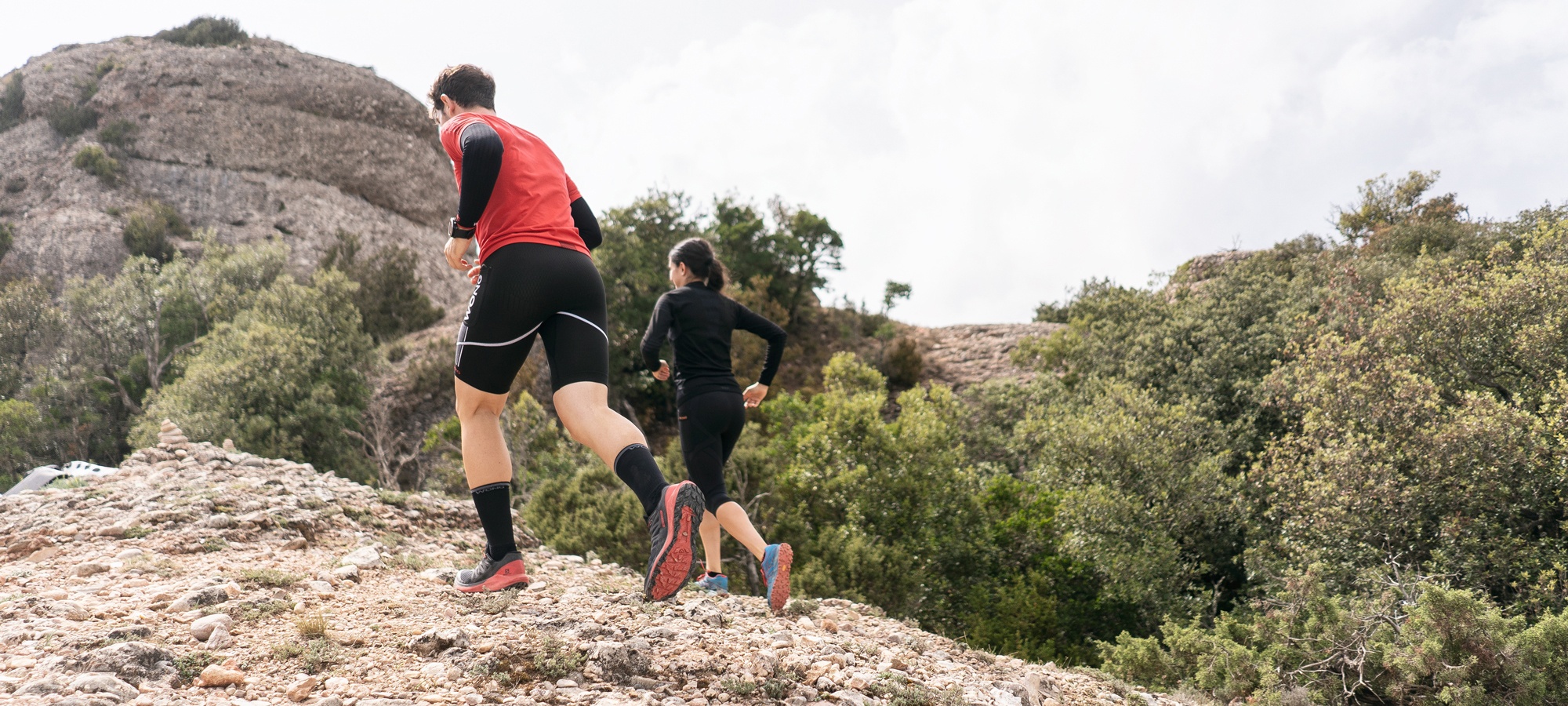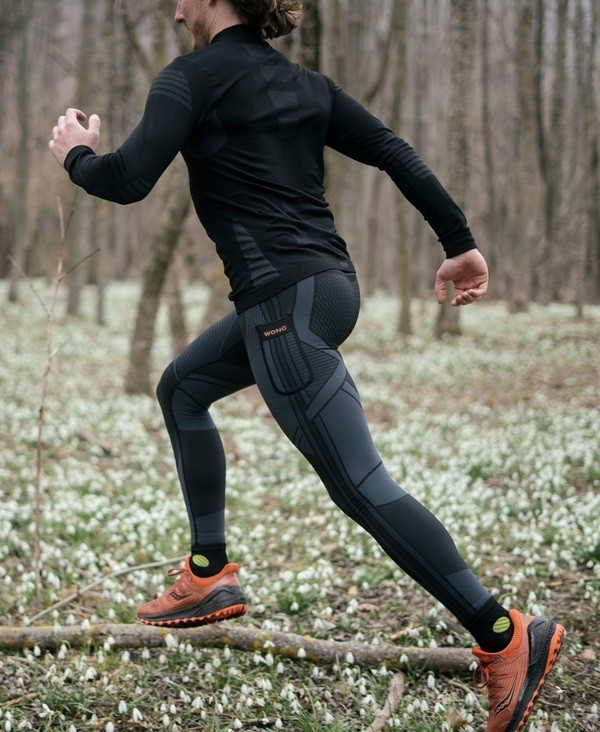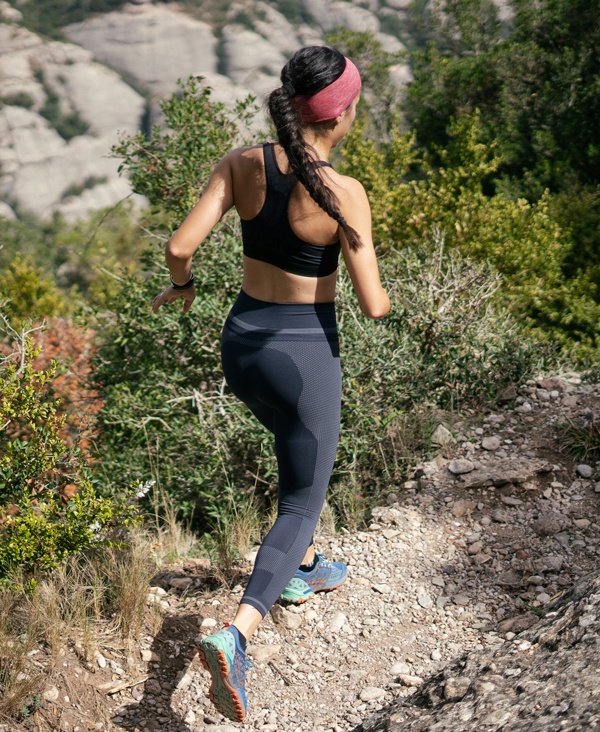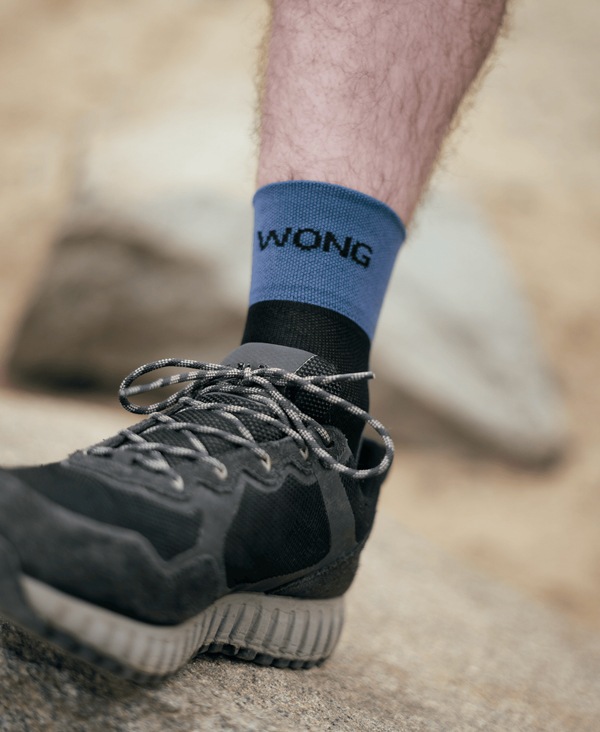#10 | Guide: First steps on the trail

GUIDE: FIRST STEPS IN TRAIL RUNNING TRAIL RUNNING
Trail running is one of the activities that has grown the most in number of followers in recent years. Our territory is ideal for running in the mountains and overcoming demanding challenges with significant unevenness. It is not an easy sport because it requires a lot of perseverance, mentality, technique, strength and other aspects that cannot be improved overnight. However, it is a very rewarding practice and with which you can get to meet fantastic people. From WONG we want to send you some key aspects if your intention is to start practicing it.
THE DEBUT IN TRAIL RUNNING
It is never too late to start trail running. If you have experience running in the city but you are interested in trying it in the mountains, we recommend that you do not hesitate and go for it. However, you should know that at first you cannot leave at the same speed that you were used to. In the mountains it is important to start with training at low heart rate so that the body adapts to the new terrain. In fact, you have to know the CaCo (Walk-Run) method to make sure you slow down on terrain where the elevation is considerable.
It is also important that you know that strength plays a very relevant role in this discipline. We recommend that you go to the gym at least once a week so that the muscles get used to working regularly.
Keep in mind that there are all kinds of people who trail run, so obviously you can too if you put your mind to it. Simply, it is important to start with walking workouts, without much elevation and of short duration. Little by little you can introduce the trot and alternate it.
TRAINING ZONES IN TRAIL RUNNING
The pulsations of our heart are the indicators of the intensity in which we are running. Based on this data, we understand that in any training or race we can find ourselves at these intensity levels:
Zone 0 (Regenerative aerobic)
Your heart rate is less than 67% of your maximum heart rate (which can be calculated by subtracting your age from 220). It is a regenerative level, ideal for recovering from a demanding race.
Zone 1 (Aerobic lipolytic)
The keystrokes are between 67% and 75%. It is surely the most common heart rate range in the training of mountain runners. It is a comfortable area where we can start a conversation with our colleagues.
Zone 2 (Glycolytic Aerobic)
In this zone, where you have a heart rate of between 75% and 85%, you already consume more carbohydrates than fat. You can spend a long time maintaining this level of intensity but you cannot maintain it for a whole training session or race.
Zone 3 (Extensive mixed anaerobic)
The keystroke is between 85% and 92%. It is a more considerable effort and that must be used in a timely manner. It is typical in mountain races of relatively short duration.
Zone 4 (Intensive Mixed Anaerobic)
It's a range that requires you to be practically at the limit. At this level of intensity, practically 100% of the pulsations are reached.
Zone 5 (Lactic Anaerobic)
The clicks exceed 100%. SThis is a level that can be reached in the final meters of a race or at the end of a significant climb.
TYPES OF TRAINING TRAIL RUNNING
It is important to plan the weeks with varied training so that there is an improvement in all the aspects that this sport requires. These four options are essential:
Long shoots: These are workouts that can last from 1 hour to 4 or 5 hours. They are used to doing on terrain with a relatively small unevenness so that the pulsations are controlled and reach zone 2 on the most intense climbs.
Fartleks: A trail run involves a lot of ups and downs in heart rate. To achieve better performance, this type of training is recommended, which consists of a few changes of pace to get the body used to it.
Series: Unlike the fartlek, where there is no complete recovery, in the series you stop completely once the peak effort has been made due to its high intensity. You have to alternate them on different terrains so that the body gets used to both descents and ascents.
Strength: As we mentioned before, it is convenient to gradually introduce strength training into your planning. We must distinguish the types of strength: isometric, resistance, maximum, explosive, proprioception and core.
HEALTH AND NUTRITION IN THE TRAIL RUNNING
One of the main problems for mountain runners is the appearance of cramps. It is difficult to get rid of them when the competition requires prolonged effort. It is advisable to prevent them with mineral salts, magnesium and something as natural as the intake of bananas. Isotonic drinks can also be consumed to find the necessary intake of salts.
On the other hand, there are many runners who suffer from digestive problems, which translate into nausea, vomiting, heartburn or diarrhea. This is why you have to be careful in the hours before training or competition because it is better to avoid foods rich in fat and fiber. Caffeine can also be one of the enemies during times of effort. And we must not forget to hydrate properly because the fact of losing body water is also associated with gastrointestinal disorders.
There is no one type of diet that works for everyone. Age, sex, genetics, body weight and volume of physical activity is different in each case and cannot be generalized. However, there are three macronutrients that you should be aware of and make sure they enter your body through food:
- Carbohydrates are the nutrient that supplies us with energy during exercise. Pasta, cereals or rice contain low glycemic index carbohydrates, which are perfect for races or long training sessions because they are absorbed slowly. On the other hand, gels, fruit or honey provide energy that is quickly absorbed.
- Unsaturated fats have very beneficial consequences for the body and become another source of energy that you will need. Foods like olive oil, salmon and nuts will provide you with good fats.
- The intake of foods with protein is also necessary in mountain runners. The protein of animal origin can be found in eggs, meat or fish while that of vegetable origin will be in legumes, nuts and vegetables.
Regarding micronutrients (vitamins and minerals), you should know that eating iron, very common in legumes and red meat, helps oxygen reach the the cells. Magnesium is another essential mineral for proper muscle function. Eating foods like avocado or spinach will help reduce muscle fatigue and cramps.
GEAR FOR TRAIL RUNNING TRAIL RUNNING
- Sneakers: There are many options available on the market. Make sure they are light and have a good grip on different terrains. Advise yourself with professionals so that you do not suffer any pain. It is recommended to look for half a size more than usual so that the nails are not affected.
- Socks: In the mountains, thicker socks usually prevail, with reinforcements in delicate areas such as the toe and heel so that the long effort is not the result of blisters or chafing. At WONG we recommend the trail running sock PINA, the SYNERA or the CANET.
- Tights or pants: A very personal choice. The leggings have a compression that helps with recovery, better eliminates sweat during the effort and allows you to carry accessories such as your mobile. The trail running tights PLUS and PERFORMANCE are ideal. On the other hand, the pants, which are usually made of polyester, are less hot. The model ORION is one of the options we offer.
- T-shirts: Short-sleeved, long-sleeved, sleeveless, thermal, compressive,... there is a huge variety and everything will depend on your preferences and the time of year you are in. In summer we recommend ultralight garments like this SAUS, while in winter you can need thermal KAY.
- Jackets: When the weather conditions are not good, it is essential to think about a second layer. You are going to find yourself in situations where wind-cutting garments like those with waterproof properties will suit you.
- Backpack: If the tights do not have enough space to store all the accessories such as gels, water, glasses or the headlamp, you can equip yourself with a backpack. A storage belt is also another of the solutions that WONG recommends.
- Watch: Finally, one of the items you will need the most when you have achieved regularity in your trail running will be a GPS watch. It will help you monitor your heart rate, control your rhythms and store the routes you take. We assure you that sooner or later you will need it.
REFERENCES
- BAÑULS M., Running in the mountains. Practical manual, Madrid, Ediciones Desnivel, 2017.
- HOW TO CALCULATE YOUR MAXIMUM HEART RATE. (2020). POLAR website: https://www.polar.com/blog/en/how-to-calculate-maximum-heart-rate/



